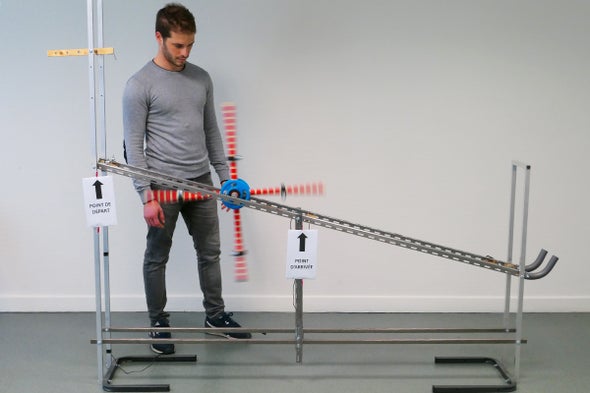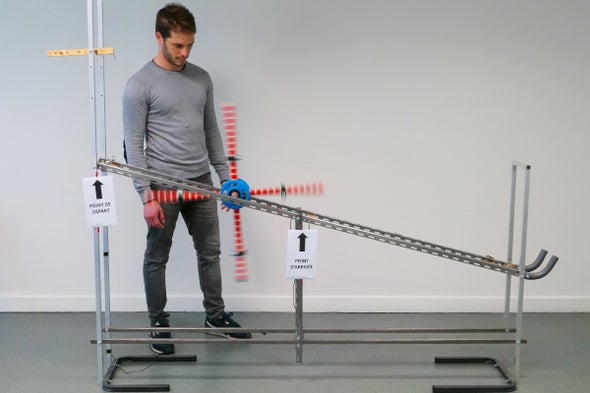

Did early human inventions—bows and arrows, houses, kayaks—result from innate smarts that bested the intelligence of chimps, lions and other species? Or did these artifacts arise from a gradual accretion of knowledge—tiny modifications over innumerable generations that constitute the passing along of collective cultural wisdom? Such shared information would not necessarily require individuals to gain a basic understanding of the physical workings of the slowly evolving technologies.
In academia, these contrasting accounts proceed along two tracks. Proponents of a “cognitive niche” hypothesis argue that humans’ singular planning abilities and understanding of cause-and-effect relationships enabled them to create technologies to readily adapt to a broad array of environments—ecological niches—that span the planet. On the opposing side, the “cultural niche” camp contends that even early technologies such as the bow and arrow were highly intricate inventions, the designs of which transcended the ingenuity of any single individual—even a Bronze Age Einstein.
How does such a dispute get resolved? One solution is to run an experiment that simulates technological development across multiple generations. A young French scientist, Maxime Derex, set about doing just that, making a strong case for culture as the driving force for this process.
In the study, Derex and his colleagues recruited multiple “generations”—each represented by one French university student. Each student was given five attempts to make a wheel roll faster down a meter-long track by adjusting the positions of weights along the length of the wheel’s four spokes. The arrangement of the weights during the last two tries was recorded in a video and shown to the next generation in a chain of five students. Fourteen such chains took part in the first stage of the experiment.
Adjusting the weights allowed the students to control both the wheel’s inertia and center of mass. It was not as easy as it might seem. “If you think that you’d have no problem with this task, think again, as even students of physics or engineering did not find it intuitive,” noted Rachel L. Kendal of Durham University in England in a commentary published along with the study in the May issue of Nature Human Behaviour.
The results showed that wheel speed increased as each chain of students progressed through its five generations. The average rose from 123.6 meters per hour on average in the first generation to 145.7 meters per hour in the fifth. (The maximum possible speed was 154 meters per hour.)
The researchers also measured the subjects’ understanding of which weight configuration worked best. At the end of a turn, a student from each chain was presented with pairs of wheels with different weight alignments—and was asked to predict which would cover the distance fastest. Despite all their fiddling during each turn, the students demonstrated no increased insight into the reasons a particular adjustment speeded things up. “They had no clue about why it works,” says Derex, now a researcher in cultural evolution at the Institute for Advanced Study in Toulouse, France, who is also affiliated with the French National Center for Scientific Research (CNRS). Even when the experiments were repeated with another 14 chains—in which, this time, the first four students were asked to write down a theory about which configuration worked best before passing it to the next generation—the recipients of these missives were unable to use the information to improve their understanding of the wheel.
The study was generally well received. Kevin N. Laland, a professor of behavioral and evolutionary biology at the University of St. Andrews in Scotland, who was not involved with the research, praised Derex and his colleagues as a “strong team of scientists, all of whom consistently churn out excellent work.” Laland, who has previously co-authored papers with the new study’s senior author, Alex Mesoudi of the University of Exeter in England, concurs with its findings. “People regularly take up casually opaque behavior, rarely understand why the cultural beliefs and practices they adopt are effective, and often devise spurious and scientifically unfounded explanations for their behavior,” he says.
Olivier Morin, a group leader at the Max Planck Institute for the Science of Human History in Jena, Germany, who was not involved with the study, called it “very clever and flawlessly executed.” But he added that the findings do not necessarily contradict the cognitive niche hypothesis—which, in his view, is not incompatible with arguments favoring a cultural niche. “Just because our causal understanding of technology is imperfect does not mean it is nonexistent,” he says. “Learners do not tinker at random to produce pointless techniques.” As an example, Morin points to students in the wheel study having avoided adjusting the weights in ways that decreased both acceleration and speed.
Derex and his colleagues do not deny that human smarts play some role—and that cognitive and cultural explanations probably exist on a continuum. But Robert Boyd, a co-author of the paper and Derex’s postdoctoral adviser at Arizona State University from 2014 to 2017, still thinks that, on balance, the evidence tilts toward a cultural niche. He recounts an experiment he conducted with Derex in 2015 that suggested that as technical inputs grow more complex, social learning prevails over an inventor toiling alone. That earlier study, performed on computers, required participants to construct virtual totem poles. To do so, they had to perform elaborate tasks such as building tools that made other tools. “That experiment clearly shows that the more complicated you make the task, the more cumulative cultural evolution beats individual learning—if you compare people who have social input and people who don’t,” Boyd says.
The wheel study brings up other issues. In future experiments, Derex wants to investigate an idea that emerged from observing how knowledge is transmitted across generations: participants who conveyed a partially correct theory to colleagues in a chain (optimizing the wheel for inertia but not center of mass, for instance) improved their performance—but that enhancement inhibited further thinking about still better options that might be achieved by changing the center of mass as well. “They get stuck with a partially correct solution,” Derex says. That result raises the provocative question of whether, in some situations, teaching itself may be counterproductive because it constrains future innovation.




